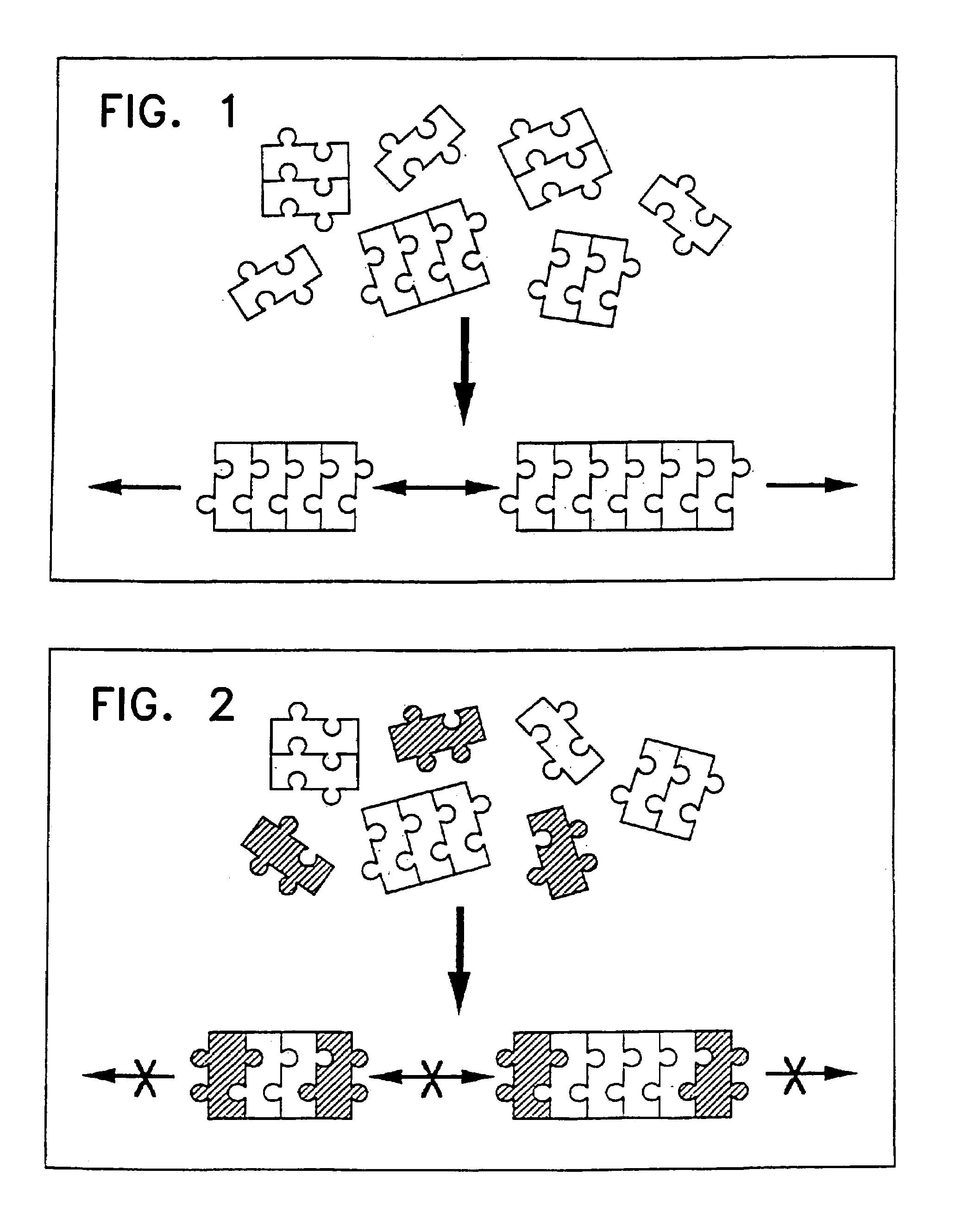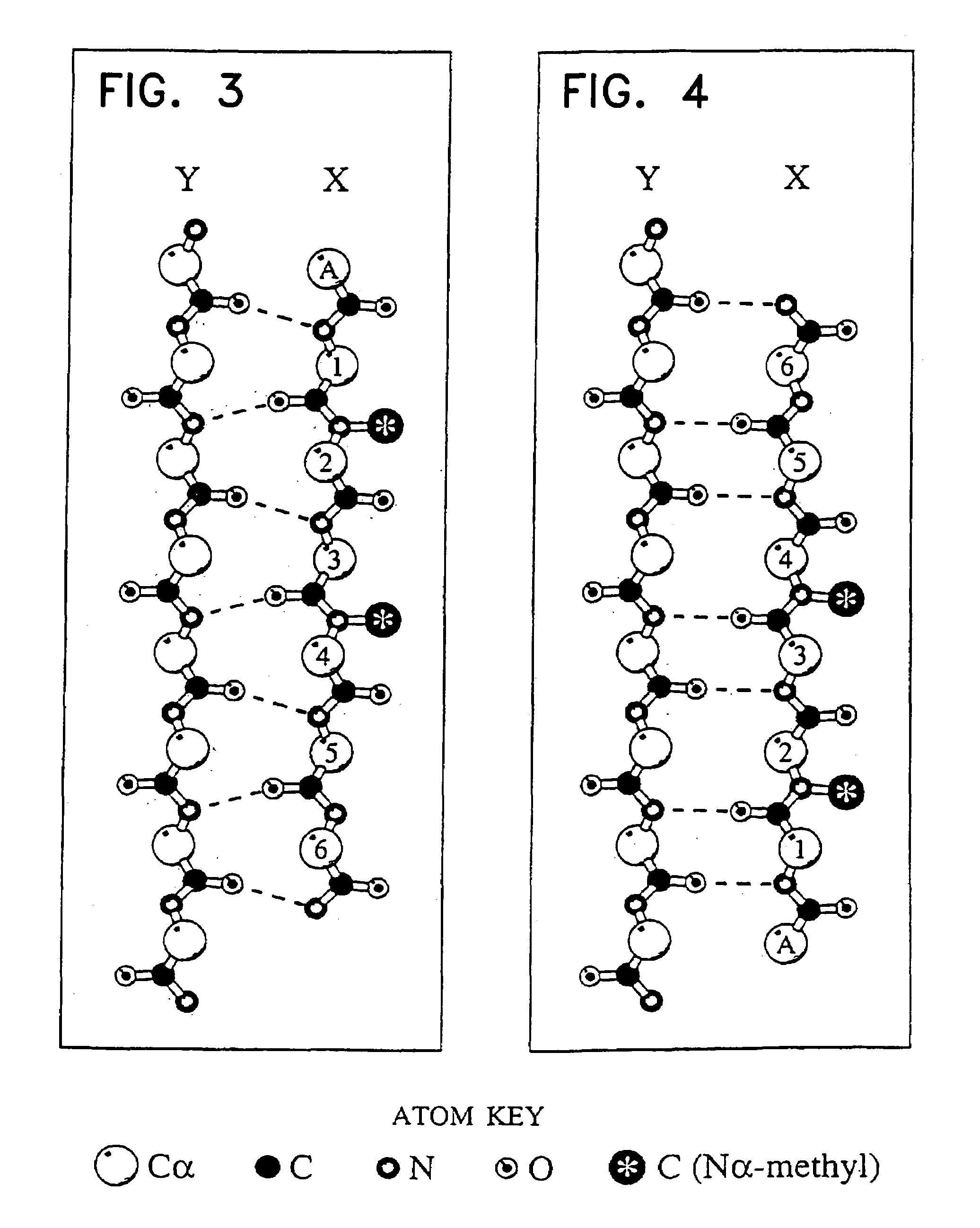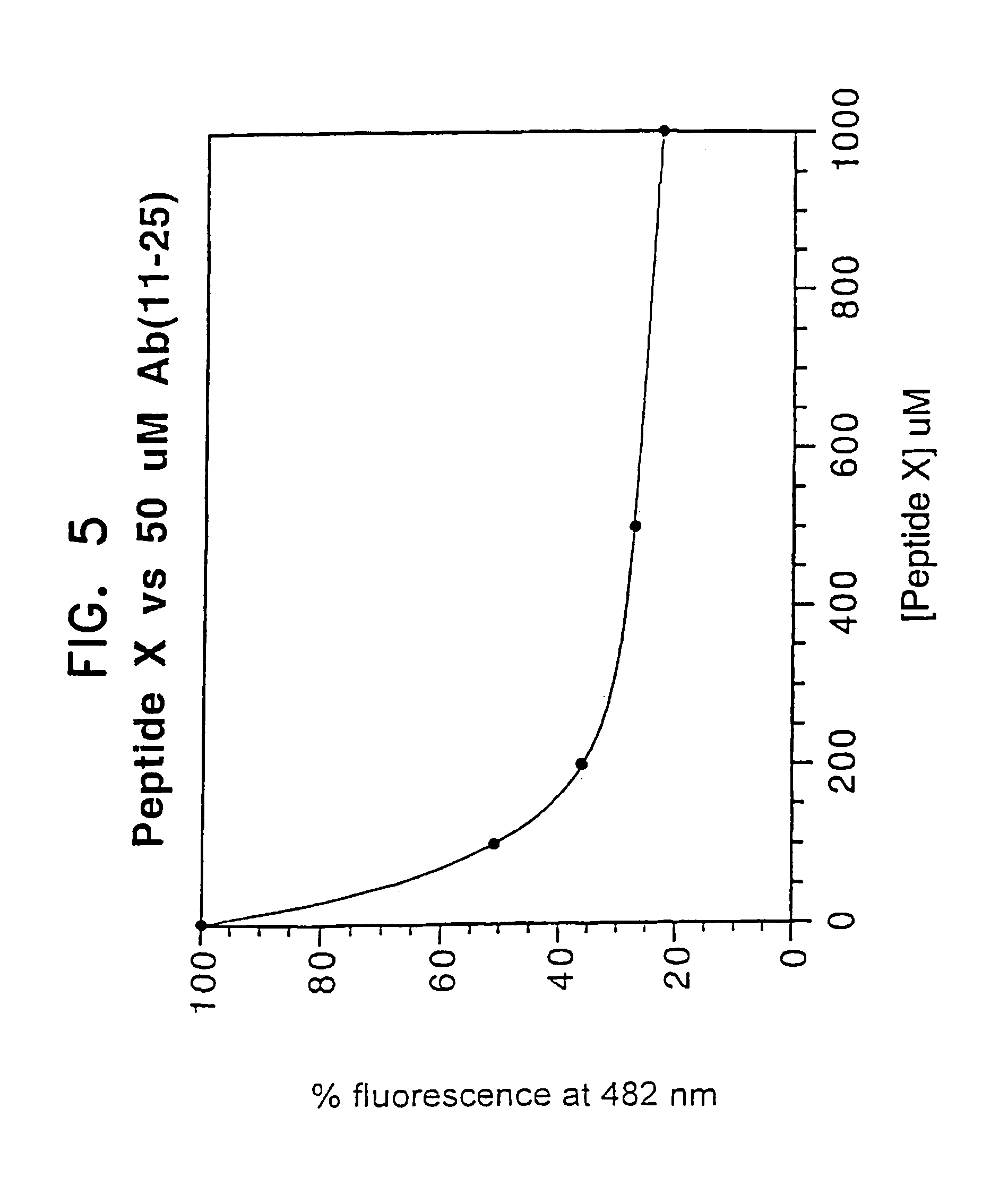Peptides containing N-substituted D-amino acids for preventing β-strand association
- Summary
- Abstract
- Description
- Claims
- Application Information
AI Technical Summary
Benefits of technology
Problems solved by technology
Method used
Image
Examples
example 1
[0104]Aggregation of the Alzheimer's Aβ peptide into amyloid fibres is caused by the intermolecular association of five-residue KLVFF (SEQ ID NO: 1) peptide segments comprising residues 16–20 of the Aβ peptide (Tjernberg et al., 1997). A peptide, referred to below as Peptide X (SEQ ID NO: 2), was therefore constructed to associate tightly with the KLVFF motif (SEQ ID NO: 1), in order to inhibit aggregation of the Aβ peptide.
[0105]The sequence of side chains in Peptide X is LLLLRR (SEQ ID NO: 2), which is highly homologous to the reverse sequence FFVLK (SEQ ID NO: 3), except that an additional residue having an arginine side chain has been added to the C-terminus.
[0106]Leucine side chains were selected to take the place of all four hydrophobic side chains in the FFVLK sequence (SEQ ID NO: 3) because they are relatively flexible and can adapt their conformation to make strong hydrophobic interactions with the neighbouring hydrophobic side chains of an associated β-strand, while an arg...
PUM
| Property | Measurement | Unit |
|---|---|---|
| Fraction | aaaaa | aaaaa |
| Composition | aaaaa | aaaaa |
| Acidity | aaaaa | aaaaa |
Abstract
Description
Claims
Application Information
 Login to View More
Login to View More - R&D
- Intellectual Property
- Life Sciences
- Materials
- Tech Scout
- Unparalleled Data Quality
- Higher Quality Content
- 60% Fewer Hallucinations
Browse by: Latest US Patents, China's latest patents, Technical Efficacy Thesaurus, Application Domain, Technology Topic, Popular Technical Reports.
© 2025 PatSnap. All rights reserved.Legal|Privacy policy|Modern Slavery Act Transparency Statement|Sitemap|About US| Contact US: help@patsnap.com



